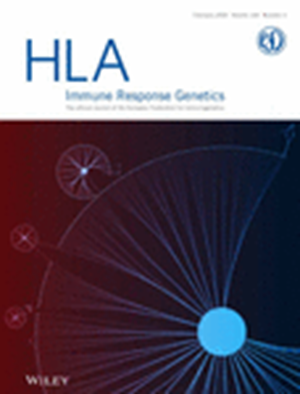Distributions of MICA and MICB Alleles Typed by Amplicon-Based Next-Generation Sequencing in South Koreans
Abstract
Major histocompatibility complex class I chain-related genes A and B (MICA and MICB) play a role as ligands in activating the NKG2D receptor expressed in natural killer cells, γδ T-cells and αβ CD8 T-cells and have been defined in human diseases and haematopoietic stem cell transplantation (HSCT). MICA and MICB alleles were genotyped at the three-field level by amplicon-based next-generation sequencing (NGS) using a MiSeqDx system and compared with the results from previous studies in healthy South Korean donors. Exons 2–5 of MICA and exons 2–4 of MICB were amplified using a multiplex polymerase chain reaction (PCR). Sequence reads of ≥ 51 depth counts were consistently obtained for each sample exon, and target exons were determined to match reference sequences contained in the IPD-IMGT/HLA database. MICA and MICB alleles were tested using exon combinations. The program was designed to recognise specific sequences and discriminate between the MICA*008:01:01/*027 alleles. A total of 22 alleles were found in MICA and MICB. We observed 1 HLA-C ~ HLA-B ~ MICA ~ MICB ~ HLA-DRB1 haplotype with significant linkage disequilibrium between alleles at all neighbouring HLA loci. These results are consistent with previous microarray results. Genotyping of MICA and MICB was possible using 11-loci HLA genes. We updated the distribution of MICA and MICB based on three-field allele and haplotype frequencies containing linkage disequilibrium in South Koreans using amplicon-based NGS. These data suggest that high-resolution MICA and MICB typing data obtained using NGS may aid in performing HSCT and disease association studies.

 求助内容:
求助内容: 应助结果提醒方式:
应助结果提醒方式:


